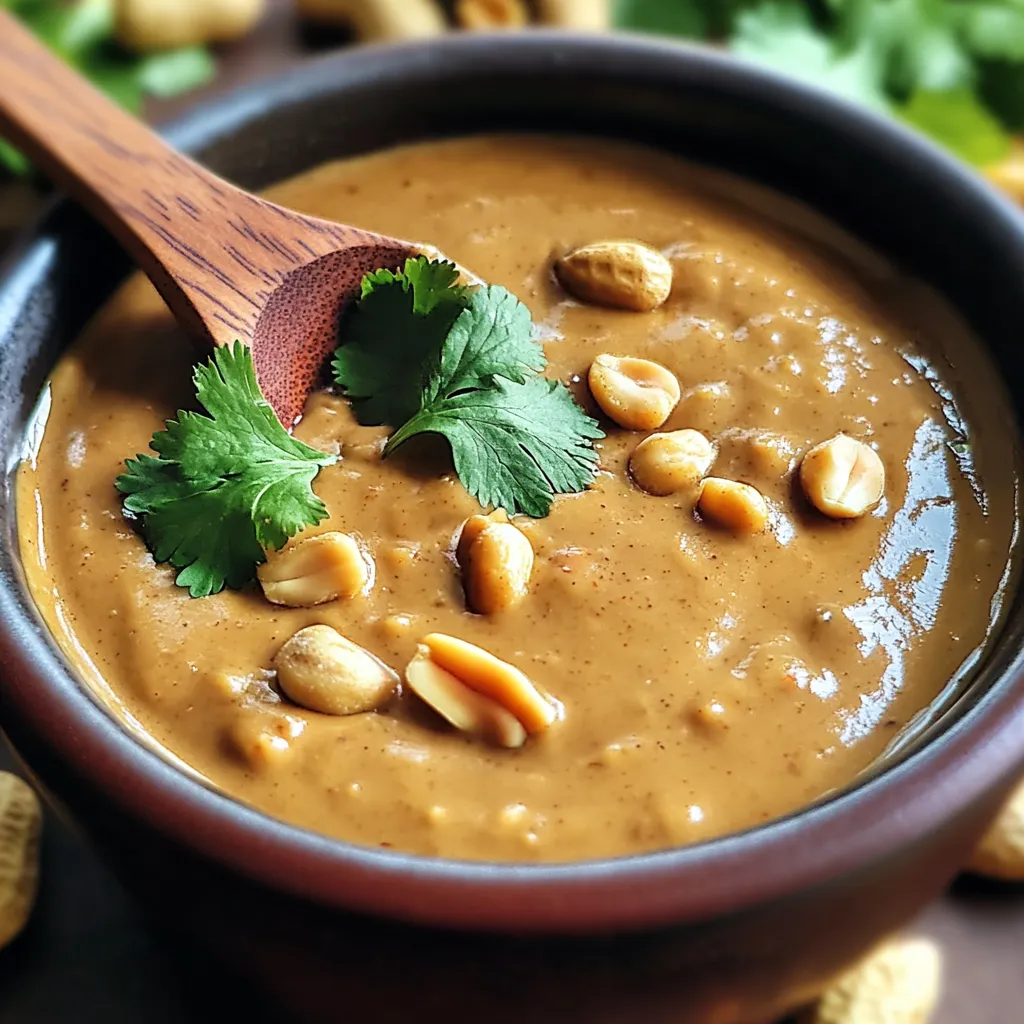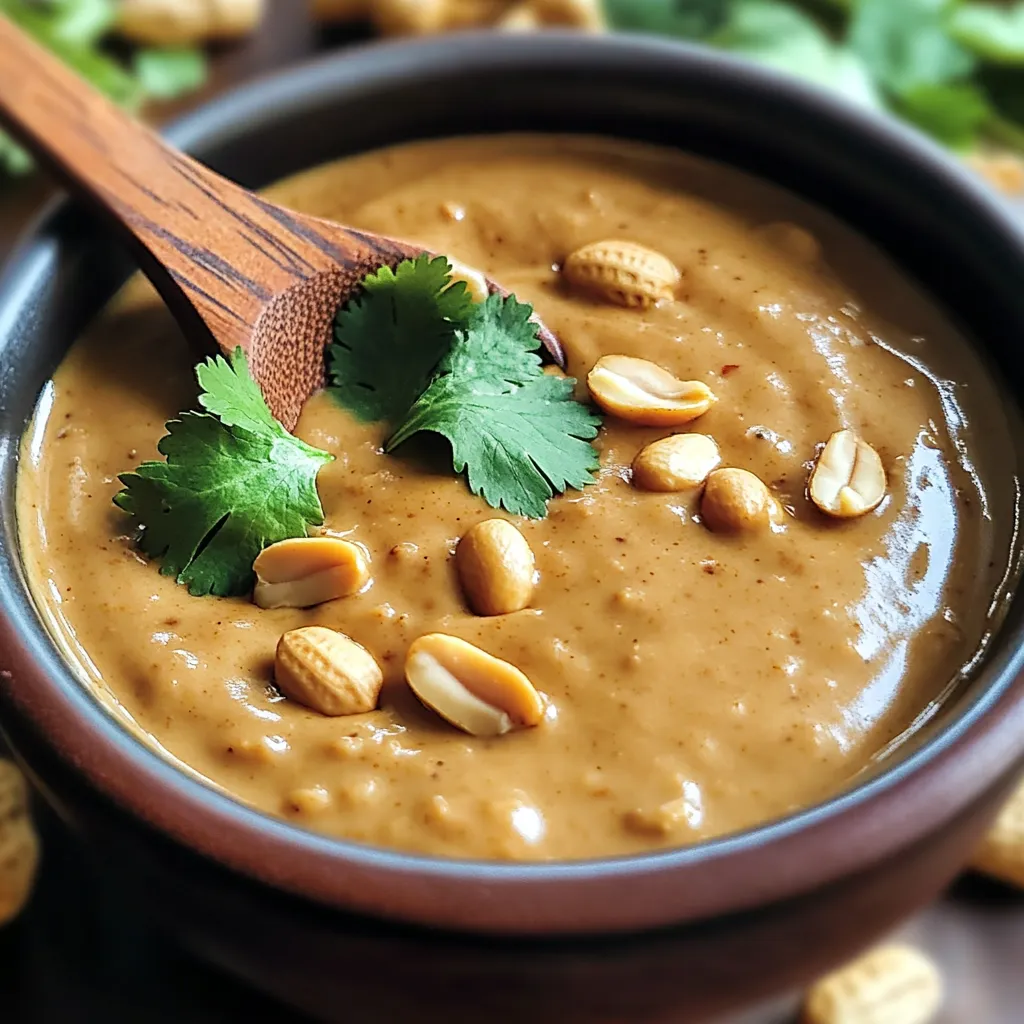 Save
Save
Velvety smooth peanut butter blends with rich coconut milk to create a luxurious sauce that dances between sweet, salty, and tangy notes. This Southeast Asian classic transforms ordinary ingredients into an extraordinary flavor experience that clings perfectly to skewered meats, freshly cooked noodles, or crisp vegetables. The aromatic combination of garlic and ginger infuses the sauce with warmth while fresh lime juice cuts through the richness, creating perfect balance in every spoonful.
I first encountered authentic satay sauce during a cooking class in Thailand where the instructor insisted on grinding fresh peanuts by hand. While I've simplified the process considerably, I still remember how the aroma filled the outdoor kitchen as we balanced the sweet, savory and spicy elements. This version brings me right back to that experience while fitting perfectly into my hectic schedule.
Essential Components
- Creamy peanut butter: Forms the rich foundation; natural varieties offer better flavor and fewer additives than commercial options
- Coconut milk: Provides silky body and subtle sweetness; full-fat versions yield the most luxurious texture
- Soy sauce: Contributes essential umami depth; choose low-sodium options to better control salt levels
- Brown sugar: Balances the savory elements with caramel notes; dark varieties offer more complex flavor
- Fresh lime juice: Brightens the entire sauce with essential acidity; squeeze just before adding for maximum impact
- Garlic: Delivers aromatic pungency; look for firm, heavy bulbs with tight skin for freshest flavor
- Ginger: Adds warming spice and subtle heat; young roots with thin skin provide the brightest flavor
- Chili flakes: Creates customizable heat level; toast briefly before adding for more complex spice notes
Sauce Creation
Warming Process: Combine peanut butter and coconut milk in a medium saucepan over gentle heat, whisking constantly to create a smooth emulsion without scorching.
Flavor Building: Add soy sauce, brown sugar, freshly squeezed lime juice, minced garlic, and grated ginger, continuing to whisk until completely incorporated.
Temperature Management: Maintain medium-low heat throughout cooking, preventing the sauce from boiling which could cause separation or burning.
Consistency Adjustment: Gradually incorporate small amounts of water while stirring, watching carefully as the sauce thickens or thins with temperature changes.
Taste Balancing: Sample the warm sauce and adjust seasonings thoughtfully, considering how flavors will develop as the sauce cools and ingredients meld.
Cooling Period: Remove from heat and allow the sauce to rest briefly, during which time the flavors will continue to deepen and harmonize.
Texture Evaluation: Assess the final consistency after cooling slightly, adding additional liquid if needed for your specific serving application.
Final Seasoning: Make any last-minute adjustments to achieve your perfect balance of sweet, salty, tangy and spicy elements.
 Save
Save
My Indonesian friend taught me to always add the lime juice at the very end of cooking. She explained that heat breaks down the bright citrus notes, leaving only acidity without the aromatic qualities. Following her advice completely transformed my satay sauce, giving it that signature freshness that makes you want to lick the spoon clean. I've never looked back since learning this simple technique.
Perfect Pairings
Create memorable meals by serving this versatile sauce alongside grilled chicken skewers for traditional satay, or drizzle it over a colorful vegetable stir-fry for instant flavor enhancement. The sauce transforms plain rice bowls into exciting meals when topped with cucumber, cilantro, and crushed peanuts. For entertaining, set out small bowls of warm satay sauce surrounded by spring rolls, blanched vegetables, and crispy tofu cubes for an interactive appetizer spread that keeps guests coming back.
Flavor Modifications
Adapt this foundation recipe by incorporating lemongrass paste and a squeeze of orange juice for a citrus-forward variation perfect for seafood. Replace some of the peanut butter with tahini for a unique fusion that pairs beautifully with roasted vegetables. For a richer Indonesian-inspired version, add tamarind paste and a dash of fish sauce to create deeper complexity in both color and flavor profile.
Preservation Tips
Extend your culinary efficiency by preparing double batches and storing portions in airtight containers where they'll maintain peak quality for seven days in the refrigerator. When ready to use, gently warm the sauce in short microwave intervals, stirring between each until it reaches your desired temperature. For thicker chilled sauce, incorporate a splash of warm water or additional coconut milk while reheating to restore its silky consistency without diluting flavor.
After years of experimenting with different ratios and techniques, this satay sauce has become my signature condiment. Friends now request it for gatherings, and family members have been known to eat it straight from the container with a spoon when they think nobody's watching. There's something deeply satisfying about creating such complex flavors from simple ingredients – the mark of truly great cooking. Whether you're new to Southeast Asian flavors or a seasoned enthusiast, this sauce deserves a permanent place in your culinary repertoire.
 Save
Save
Common Questions About Cooking
- → Is this peanut satay sauce gluten-free?
- Not as written, but you can easily make it gluten-free by substituting the soy sauce with tamari or coconut aminos.
- → Can I use crunchy peanut butter instead of creamy?
- Yes! Crunchy peanut butter works well too and adds a nice texture to the sauce. You might need a little extra water to reach your desired consistency.
- → How spicy is this sauce?
- The spice level is adjustable. For a mild version, skip the chili flakes or sriracha. For more heat, increase the amount to your taste preference.
- → What can I serve with this peanut satay sauce?
- It's versatile! Use it as a dip for spring rolls or raw veggies, drizzle over rice bowls or noodles, or serve with grilled chicken, beef, or tofu skewers.
- → Can I make this sauce ahead of time?
- Absolutely! It keeps well in the refrigerator for up to a week. Just remember it will thicken when chilled, so you may need to add a splash of warm water before serving.
